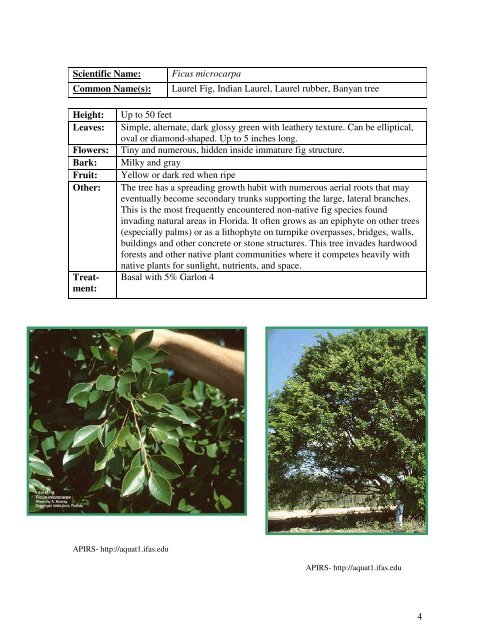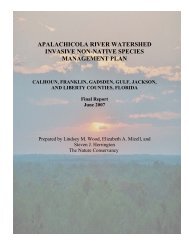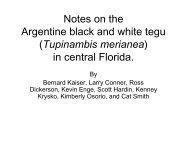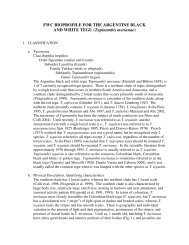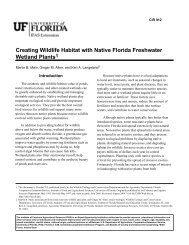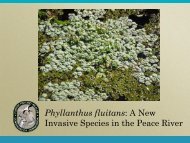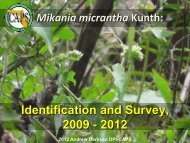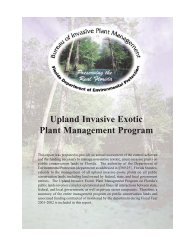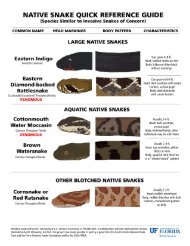Identification Guide For Invasive Exotic Plants of the Florida Keys
Identification Guide For Invasive Exotic Plants of the Florida Keys
Identification Guide For Invasive Exotic Plants of the Florida Keys
Create successful ePaper yourself
Turn your PDF publications into a flip-book with our unique Google optimized e-Paper software.
Scientific Name:<br />
Common Name(s):<br />
Ficus microcarpa<br />
Laurel Fig, Indian Laurel, Laurel rubber, Banyan tree<br />
Height:<br />
Leaves:<br />
Flowers:<br />
Bark:<br />
Fruit:<br />
O<strong>the</strong>r:<br />
Treatment:<br />
Up to 50 feet<br />
Simple, alternate, dark glossy green with lea<strong>the</strong>ry texture. Can be elliptical,<br />
oval or diamond-shaped. Up to 5 inches long.<br />
Tiny and numerous, hidden inside immature fig structure.<br />
Milky and gray<br />
Yellow or dark red when ripe<br />
The tree has a spreading growth habit with numerous aerial roots that may<br />
eventually become secondary trunks supporting <strong>the</strong> large, lateral branches.<br />
This is <strong>the</strong> most frequently encountered non-native fig species found<br />
invading natural areas in <strong>Florida</strong>. It <strong>of</strong>ten grows as an epiphyte on o<strong>the</strong>r trees<br />
(especially palms) or as a lithophyte on turnpike overpasses, bridges, walls,<br />
buildings and o<strong>the</strong>r concrete or stone structures. This tree invades hardwood<br />
forests and o<strong>the</strong>r native plant communities where it competes heavily with<br />
native plants for sunlight, nutrients, and space.<br />
Basal with 5% Garlon 4<br />
APIRS- http://aquat1.ifas.edu<br />
APIRS- http://aquat1.ifas.edu<br />
4


